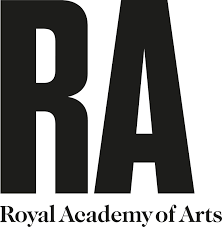5 Common Canvas Stretching Mistakes
Simple guide to help framers and art enthusiasts avoid these common canvas stretching mistakes

Canvas stretching is an essential part of presenting and preserving artwork. However, it’s a process fraught with potential pitfalls that can compromise the integrity and appearance of the canvas.
In this article, we’ll explore some of the most common canvas stretching mistakes, offering insights to both art enthusiasts and professional framers.

Mistake #1: Overlooking Canvas Material
Recognizing Different Canvas Types
Canvas material varies in texture and elasticity. Using the wrong stretching technique for a specific canvas type can result in damage.
Solutions:
- Material Identification: Learn to identify different canvas materials.
- Technique Adaptation: Adjust stretching methods to suit the canvas type.
Mistake #2: Inadequate Stretching
The Balance between Taut and Overstretched
Both under stretching and over stretched canvases can distort the artwork.
Solutions:
- Even Tension: Ensure even tension across the canvas.
- Professional Equipment: Use tools designed for canvas stretching.
- Use a professional slotted stretcher. This has corner wedges that can be tapped out to maintain a ideal tension.
Mistake #3: Incorrect Frame Sizing
Understanding the Importance of Precise Measurements
One of the most fundamental errors in canvas stretching is choosing a frame that doesn’t suit the canvas size. A frame too small can lead to overstretching, while a large frame may cause sagging. The depth of the stretcher is also important to consider. If the stretcher has previously been stretched, ensure that you are re-stretching it onto the same depth of stretcher.
Solutions:
- Accurate Measurement: Always measure the canvas carefully before selecting a frame.
- Professional Advice: Consult experts, like those at SE1 Picture Frames, for guidance.
Mistake #4: Ignoring Environmental Factors
The Impact of Humidity and Temperature
Canvas is sensitive to environmental conditions. Ignoring these can lead to warping or canvas degradation.
Solutions:
- Climate Control: Store and work in a controlled environment.
- Regular Checks: Monitor the canvas over time for any changes.
Mistake #5: Neglecting Long-term Care
Understanding the Role of Conservation Framing
Proper framing is crucial for the longevity of a stretched canvas. Conservation framing can protect the artwork from various damages.
Solutions:
- Quality Materials: Use high-quality, acid-free framing materials.
- Expert Services: For the best results, consider SE1 Picture Frames’ conservation framing services.
Conclusion
Avoiding these common mistakes in canvas stretching is crucial for the preservation and presentation of artwork. Always seek professional advice and consider expert services like SE1 Picture Frames to ensure the best care for your artworks.

Canvas Stretching Mistakes
What are the most common mistakes made in canvas stretching?
The most common mistakes include incorrect frame sizing, overlooking canvas material, inadequate or uneven stretching, ignoring environmental factors, and neglecting long-term care and conservation framing.
How can I avoid choosing the wrong frame size for my canvas?
Always measure your canvas carefully before selecting a frame, and if in doubt, consult with professional framers like those at SE1 Picture Frames for precise guidance.
Why is it important to consider the type of canvas material during stretching?
Different canvas materials have varying textures and elasticity. Understanding these differences ensures that the right stretching technique is used to avoid damage.
What can happen if a canvas is overstretched?
Overstretching a canvas can lead to tearing, distortion of the artwork, and long-term damage to the canvas fibres.
Can environmental factors really affect a stretched canvas?
Yes, factors like humidity and temperature can cause the canvas to expand or contract, potentially leading to warping or degradation.
What are the best conditions for stretching and storing canvas?
It’s best to work and store canvases in a climate-controlled environment with stable humidity and temperature.
Is there a specific technique to ensure even tension during canvas stretching?
Yes, using a systematic approach and professional tools can help ensure even tension. This might include working from the center outwards and alternating sides while stretching.
What is conservation framing, and why is it important for stretched canvases?
Conservation framing involves using high-quality, acid-free materials to protect artwork from environmental damage. It’s crucial for preserving the integrity and longevity of stretched canvases.
How often should a stretched canvas be checked for maintenance?
It’s advisable to check annually for any signs of wear, environmental damage, or loosening of the canvas.
Can I restretch a canvas if it’s been done incorrectly?
Yes, it’s possible to restretch a canvas, but it’s a delicate process best handled by professionals like those at SE1 Picture Frames.
What should I do if I notice warping or sagging in my stretched canvas?
If you notice warping or sagging, it’s important to consult a professional framer for an assessment and potential restretching.
Are there specific tools required for proper canvas stretching?
Yes, tools like stretching pliers, staple guns, and a robust stretching frame are essential for achieving professional results.
Can any type of canvas be stretched, or are there limitations?
While most canvases can be stretched, factors like material quality, age, and previous damage can impact the stretching process’s success.
Should I attempt canvas stretching as a beginner?
While it’s a valuable skill, canvas stretching can be complex. Beginners should start with guidance or consider professional services to ensure the best outcome.
Some of the brands we’ve worked with...
Our Workshop
Our workshop is equipped to handle a wide range of specialist and bespoke projects. Undertaking small and large projects alike, we cater for artists, designers, galleries, museums, photographers and corporate and private clients. Orders range from single frames to framing works for large exhibitions.
Address
BY APPOINTMENT ONLY
SE1 Picture Frames, Alaska Buildings,
61 Grange Road, London,
SE1 3BH, United Kingdom
Nearest tube: London Bridge, Bermondsey, Borough
Bus: Number 1 and 78.
Free visitor parking available:
Entrance is via Bacon Grove just off Grange road. Enter the Alaska Buildings through the large electric gate. Push buzzer and speak to security to gain access.
Email Address
Phone Numbers
Contact us
We are usually on site but to avoid disappointment and to allow us plenty of time to discuss your project with you, please contact us and book an appointment before you set off.
On arrival please report to security.
Request a Quote
Please be aware that an accurate quote is usually only possible once we have seen the art work and discussed all possibilities with you. Our standard framing is to conservation standards and this will be reflected in the quote unless otherwise specified.
Our Blog

Conservation Framing Trends 2023/2024: Embracing the Future of Art

How to Re-Stretch a Canvas

How to Frame Drawings and Watercolours

7 Essential Canvas Stretching Tools

Where to Buy Art in SE1?

How to Frame Documents

How to Frame Digital Prints

Canvas Restretching Signs: When to Restretch Your Art






























